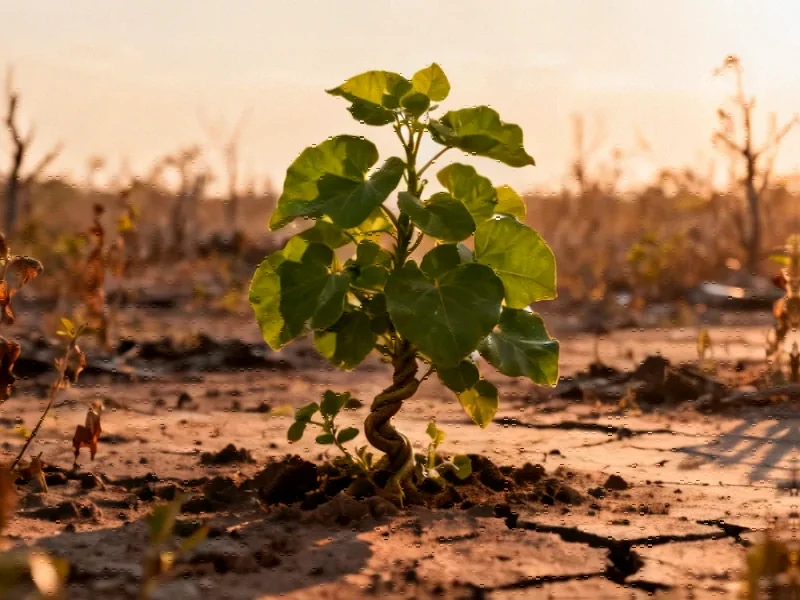The Growing Threat of Invasive Species
In our increasingly interconnected world, plant species are traveling across continents at unprecedented rates. While some introduced plants coexist peacefully with native flora, others transform into ecological bullies—outcompeting local vegetation, disrupting food webs, and fundamentally altering ecosystem processes. These invasive species represent one of the most significant threats to global biodiversity, costing economies billions annually in control efforts and ecological damage.
Revolutionizing Prevention Through Interdisciplinary Innovation
An interdisciplinary team from the University of Connecticut has developed a groundbreaking solution to this persistent problem. By combining expertise from geography, physics, and ecology, researchers have created an AI-driven framework that can predict which plant species are likely to become invasive before they establish themselves in new territories. This proactive approach marks a significant departure from traditional reactive methods.
Assistant Professor Julissa Rojas-Sandoval explains the collaborative nature of the project: “This is exactly the type of work that we each could not have done alone. By bringing together different disciplines, we’ve created something truly innovative that addresses a critical environmental challenge.”
From Galaxies to Greenery: Adapting Astrophysical Algorithms
The research began with an intriguing question: Could machine learning techniques used in astrophysics to classify galaxies be adapted for ecological applications? Professor Rojas-Sandoval’s curiosity sparked a collaboration with physics associate professor Daniel Anglés-Alcázar and ecology professor Michael Willig to test this concept.
“What makes this approach particularly exciting,” Rojas-Sandoval notes, “is that we’re not just classifying plants as invasive or not invasive. We’re providing a way to identify which species have the potential to become problematic before they even arrive in a new area.” This forward-looking capability represents a paradigm shift in how we approach invasive species prevention and ecological management.
Beyond Traditional Risk Assessment
Traditional invasion risk assessments, while valuable, suffer from several limitations. These assessments are often subjective, time-intensive, and typically applied after a species has already been introduced. By the time a plant is formally recognized as invasive, it’s usually well-established and extremely difficult to control or eradicate.
The new machine learning framework addresses these shortcomings by evaluating invasiveness potential proactively. “This methodology can help perform risk assessments before plants are cleared for import,” explains Rojas-Sandoval, “by identifying which species pose the highest risk of becoming invasive in the destination country.”
The Data-Driven Approach
The researchers compiled and analyzed three comprehensive datasets to train their machine learning algorithms:
- Biological characteristics: Reproduction strategies, growth forms, and other ecological traits
- Invasion history: Records of where and when species had previously become invasive
- Habitat preferences: Environmental requirements and adaptability of each species
This multi-faceted approach mirrors the complexity of biological systems while leveraging computational power to identify patterns invisible to human analysts.
Key Predictive Factors Revealed
The analysis revealed several powerful predictors of invasion success. Perhaps unsurprisingly, a plant’s previous history of invasion emerged as a strong indicator—species that had caused problems in multiple regions were highly likely to become problematic in new areas.
More intriguing were the biological traits that predicted invasion potential. “Plasticity in reproduction was also a good predictor,” says Rojas-Sandoval. “If a plant can reproduce by seed, cuttings, or other means, this gives them a significant advantage.” The number of generations a plant could complete in a single growing season also proved crucial for establishing footholds in new environments.
Impressive Accuracy and Practical Applications
The machine learning models achieved remarkable predictive power, with accuracy rates exceeding 90%. This high level of precision can help remove human biases from risk assessments while significantly increasing their predictive capabilities. As with many technological advancements, the key lies in proper implementation and continuous refinement.
Rojas-Sandoval emphasizes that this approach complements rather than replaces traditional methods: “We are not trying to replace traditional risk assessments, which have been vital for biosecurity until now. This is a new strategy to take advantage of the wonderful datasets and machine learning tools available to complement previous methods.”
Global Scalability and Future Directions
The researchers deliberately used widely available data to ensure their methodology could be replicated in other regions. Their initial focus on Caribbean islands provides a proof of concept, but the team is already planning expansion. “We want to analyze other regions and see if the models can still successfully predict the probability of invasion,” says Rojas-Sandoval.
If region-specific models prove necessary, the framework can be adapted accordingly. The researchers are inviting collaboration from scientists worldwide to create similar datasets and test the model’s robustness across different ecosystems. This approach aligns with broader sustainability initiatives that require sophisticated monitoring and prediction capabilities.
The Future of Ecological Forecasting
While the current models may not yet predict invasions at a global level due to biological complexity, the researchers are confident that general patterns will emerge with additional data and refinement. The integration of AI into ecological forecasting represents a significant step forward in our ability to protect biodiversity and maintain ecosystem health.
As climate change and globalization continue to reshape our planet’s ecological landscape, such proactive, data-driven approaches will become increasingly vital for environmental protection and sustainable management of our natural resources.
This article aggregates information from publicly available sources. All trademarks and copyrights belong to their respective owners.
Note: Featured image is for illustrative purposes only and does not represent any specific product, service, or entity mentioned in this article.



